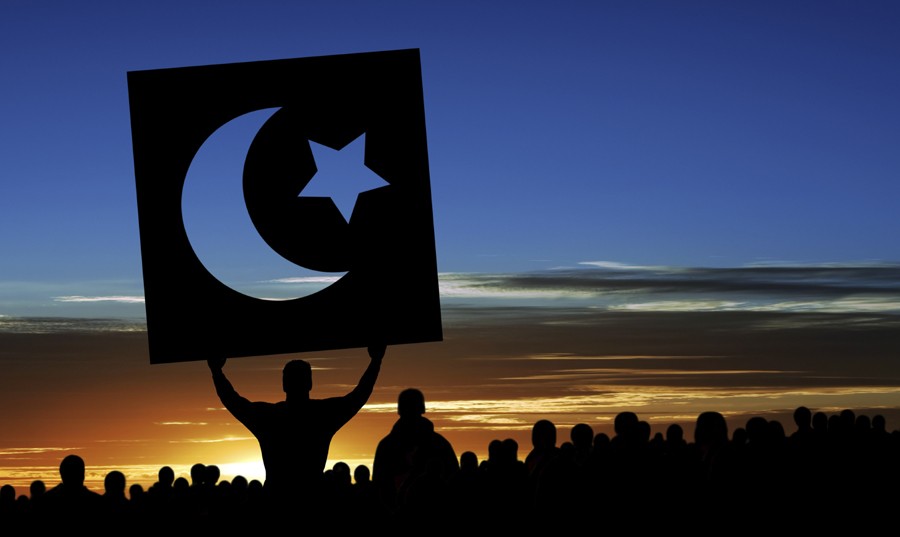

"The nationalist impulse among Pakistanis gets dissipated by a very strong streak of Pan-Islamism. Therefore socio-political culture is starkly dichotomous with these two trends pulling our society as well as the state in opposite directions."
That was the moot point brought up by students of Political Science and History during an intense discussion on ‘Pakistan and Political Modernism’.
Most of them underscored the need to focus on our national identity instead of worrying about Millat-i-Islamia, which, according to them, is unmanageable -- because of its size and politics and socio-cultural discrepancies. They pointed out that we straddle two conflicting political notions, and suggested that it would be better for Pakistan to forsake pan-Islamic ‘romanticism’ and allow its interests to take priority.
In this conversation, the ideas of ‘nation-state’ and ‘pan-Islamism’ were presented as binary opposites. Nation-state was referred to as a symbol of modernism whereas pan-Islamism and such categories like millat as tradition (embedded in Muslim history). For them, tradition impedes progress which is a typical refrain of liberals.
That analysis was far too simplistic and required some profound thinker to make sense of these categories.
My contention is that modernism in any territory comes about only after being inflected by tradition. These two categories do not exist in complete isolation of each other. However, we agreed that while living in a nation-state many Pakistanis think in pan-Islamic terms.
For deeper analysis of the relationship between these dispensations, nation-state (modernism) and pan-Islamism (tradition), the historical context in which the latter sprouted and evolved may serve as an appropriate entry point into the discourse.
I have mentioned in my previous columns that pan-Islamism stemmed out of the period of decline that plagued the Muslim dynasties in the second half of the 19th century. According to Cemil Aydin, a historian from the University of North Carolina, the Russian Empire’s pan-Slavic policies toward Christians living under the suzerainty of Ottomans became an inspiration for early pan-Islamist ideas among the Muslims. The Ottoman-Russian war of 1877-78 was the turning point - because, as a result of that war, the Muslim and Christian identities underwent a global mobilisation across empires. That trend became more pronounced by 1881-82, when Tunisia and Egypt were absorbed into French and British protectorates.
Thus the sick man of Europe was inching towards its dénouement. The Muslim press and public opinion became quite vociferous about Muslim subjugation by the Christian empires. The first pan-Islamic journal, al-Urwat al-Wuthqa, came out in 1884 from Paris. Jamal-ud-Din Afghani and Muhammad Abduh, the principal proponents of pan-Islamism, jointly managed it. Its content was ‘highly anti-British and anti-imperial’. It emphatically argued that Muslims were obligated to defend the Muslim World and work for Muslim renaissance.
Another journal, Al-Manar, published in Cairo, was edited by the city’s leading pan-Islamist Rashid Rida. It was the most influential publication during the era of pan-Islamism’s ascendancy. It was published between 1898 and 1935 which was the period of traumatic transformation. The journal reflected the impact of changes in the international order on the Muslim world. Interestingly, the largest funding source of the journal was Indian-Muslims.
All these developments were symptomatic of pan-Islamism being a modern phenomenon, manifested after the gradual but steady erosion of the Empire system.
Another important reference with respect to pan-Islamism that is very rarely highlighted is the Pan-Islamic Congress held in Cairo in November 1907 at the behest of a Crimean Muslim Isamail Gaspirali.
Ismail Gaspirali (1851-1914) was an extremely important but little known Tartar intellectual and reformer. He was a pan-Turkic educator, journalist, publisher and politician. He was one of the first Muslim intellectuals in the Russian Empire who, like Sir Syed Ahmed Khan in India, realised the need for education and cultural reform and modernisation of the Turkic and Islamic communities. He widely criticised traditional education system in Muslim schools that focused on religion. He devised a new method of teaching children, how to read effectively in their mother tongue, and introduced curricular reforms. His works were translated by Hungarian-British Orientalist Arminius Vambery. This is how his ideas became accessible to other Muslim intellectuals like Rashid Rida.
Gaspirali advocated that education be imparted in local language(s). Thus he developed a ‘pan-Turkic’ language, which was a simplified form of Turkish, omitting words imported from Arabic and Persian.
Back in 1881, he said, "Our ignorance is the main reason for our backward condition. We have no access at all to what has been discovered and to what is going on in Europe. We must be able to read in order to overcome our isolation; we must learn European ideas from European sources. We must introduce into our primary and secondary schools subjects that will permit our pupils to have such access".
It was because of Rida’s support that around 300 delegates came to attend the Pan-Islamic Congress, where the destiny of the Muslim World came under discussion. The Congress, instead of taking up notions such as nationalism and anti-imperialism for discussion, emphasised on ‘the causes of Muslim decline in economic, educational and social life and strategies for Muslim revival’.
One may see the idiom and vocabulary employed here is absolutely modern. The point I want to make here is that the current categories are essentially modern. Ironically we think otherwise.
--To be continued